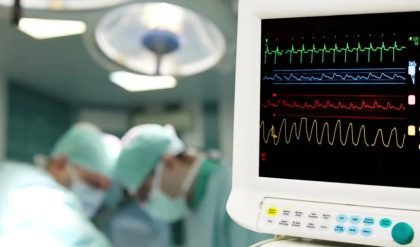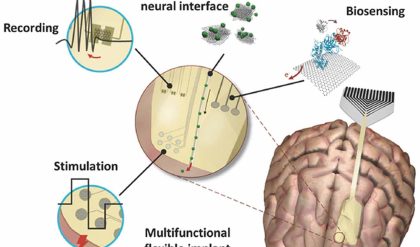
Overview
Immunocytochemistry (ICC) is a laboratory technique that allows for the detection of specific proteins or antigens in cells using selective probes that can be visualized under a microscope. This protocol describes two-step ICC using a primary antibody against a specific target and secondary antibody labeled with a fluorescent probe. The following protocol is adjusted for 3D bioprinted samples consisted of cells encapsulated in a hydrogel.
Materials
· PBS
· PBS/0.1% Triton-X solution
· PBS/0.1 Tritox-X/1% Bovine Serum Albumin (BSA)
· 10% formalin or 4% paraformaldehyde (PFA)
· DAPI solution
· Mounting medium
· Silicone grease
· Microscope glass slide
· Coverslip
Methods: Immunocytochemistry
- Carefully aspirate media from your sample.
- Wash your 3D bioprinted construct in PBS x1 for 5 minutes. Make sure the entire construct is immersed in PBS.
- Fix with 10% formalin or 4% PFA for 30 minutes at room temperature by immersing the construct in the fixative.
- Wash 3x with PBS/0.1 Tritox-X 15 min at room temperature to permeabilize cell membranes.
- Incubate samples with primary antibody diluted to the final concentration in PBS/0.1% Triton-X/1% BSA overnight at 4°C.
- Wash 3x for 15 minutes in PBS/0.1% Triton-X.
- Incubate sample with secondary antibody diluted in PBS/0.1% Triton-X/1% BSA for 2h at room temperature protected from light.
- Wash 3x for 15 min in PBS at room temperature.
- Dilute DAPI to a final concentration of 0.1µg/ml to 10µg/ml in PBS and immerse 3D bioprinted construct in the resulting solution. Incubate for 15 minutes at room temperature protected from light.
- Wash 3x for 15 min in PBS at room temperature.
- Take a microscope glass slide and manually extrude some grease silicone to create a well slightly larger than your 3D construct. (Glass slide treatment protocol)
- Move your 3D bioprinted construct to silicone well on the microscope glass slide.
- Add mounting medium to the silicone well until completely filled.
- Place a coverslip on top and press slightly. Silicone grease will not be solid, so perform this step carefully.
- Proceed with imaging using a selected method. We recommend confocal fluorescence imaging or two-photon microscopy for 3D samples. Remember to keep thin coverslip closer to the microscope objective for better imaging results.


